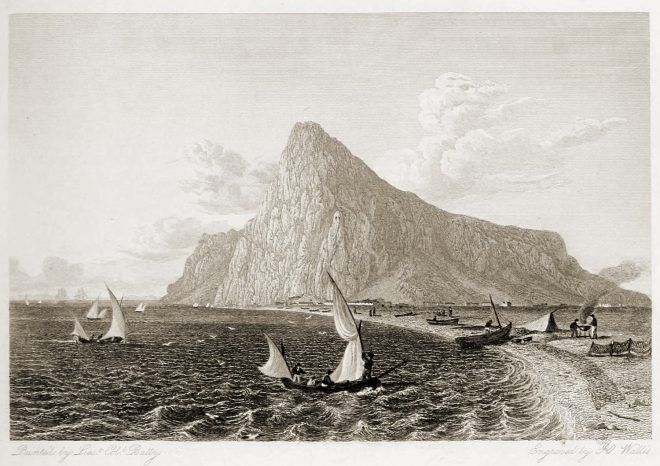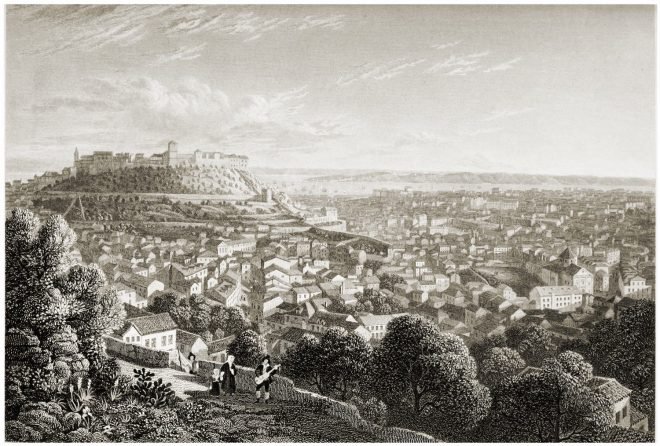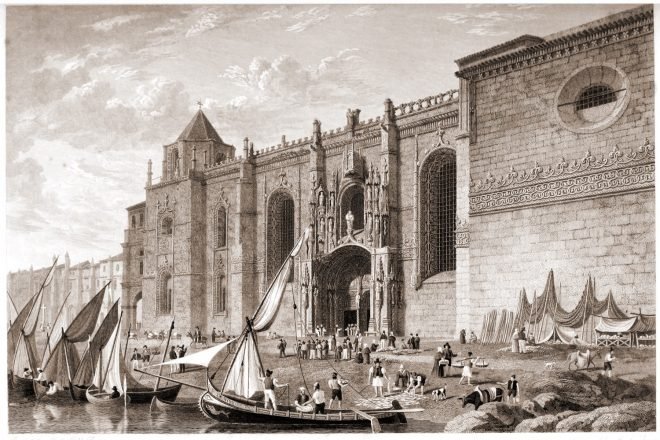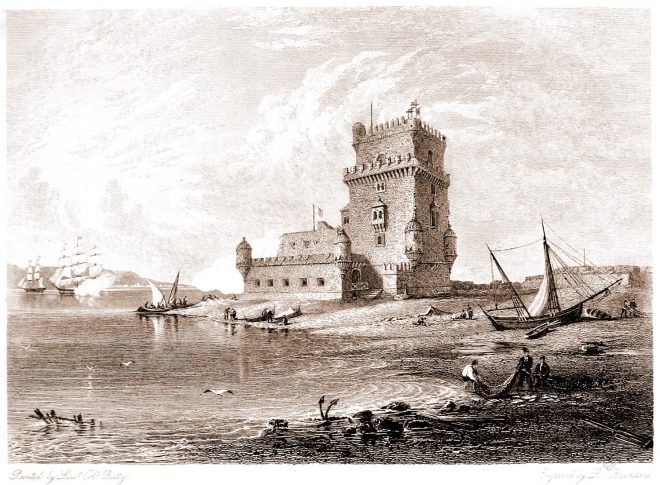We have in the annexed view, the appearance of Gibraltar, as seen when approached by land. The rock rises majestically above the water of the Bay
Category: Europe
Fashions in Europe. European Costume and Cultural History.
The Rock of Gibraltar seen from the mediterranean shore of the isthmus.
The most characteristic feature of the rock, or rather mountain of Gibraltar, may be seen to the greatest advantage from the eastern shore of the isthmus, which connects it with the mainland of Spain.
Panorama of Lisbon in incomparable splendour from Almada.
Opposite to Lisbon stands Almada, on the summit, and near the east end, of the high cliffs, which extend along the south bank of the Tagus, from thence to the sea.
Characteristic scene. Pillory of Lisbon. The Largo do Pelourinho.
The Largo do Pelourinho is so named from the small ornamental column which stands in its centre.
Lisbon, from the Chapel Hill of Nossa Senhora da Monte.
One of the most comprehensive views of the city of Lisbon may be obtained from the above-named eminence, within a short distance from the Chapel of Nossa Senhora da Monte.
Lisbon. Selected city view from Rua de San Miguel.
The ancient city of Lisbon from the Rua de San Miguel. Select views by Robert Batty.
The Mosteiro dos Jerónimos, also known as Jerome Monastery, Lisbon.
The Mosteiro dos Jerónimos, also Mosteiro de Belém; Hieronymite Monastery, also colloquially known as Jerome Monastery,
The Belém Tower or Torre de Belém. Tower of Saint Vincent at Lisbon.
The Torre de Belém in the Belém district at the mouth of the River Tejo is one of Lisbon’s most famous landmarks.
The Castalian Spring near the sanctuary of Delphi.
In ancient times, pilgrims purified themselves at this spring before entering the sacred precincts of Delphi.
The Acropolis of Mycenae on the Peloponnese. Ancient Greece.
Mycenae was one of the most important cities in Greece in pre-classical times, and the Mycenaean culture was named after it.










